Art has always been at the forefront of rebellious expression, touching upon sensitive subjects and provoking the powers that be, often resulting in either self or imposed censorship. When public opinion clashes with artistic creation, culture vs. censorship emerges, raising important questions about freedom of expression. One fascinating place where this conflict is analyzed and celebrated is Barcelona‘s Museum of Forbidden Art, an institution dedicated to showcasing masterpieces banned throughout history for their provocative content or subversive messages.
If we don’t believe in freedom of expression for people we despise, we don’t believe in it at all.
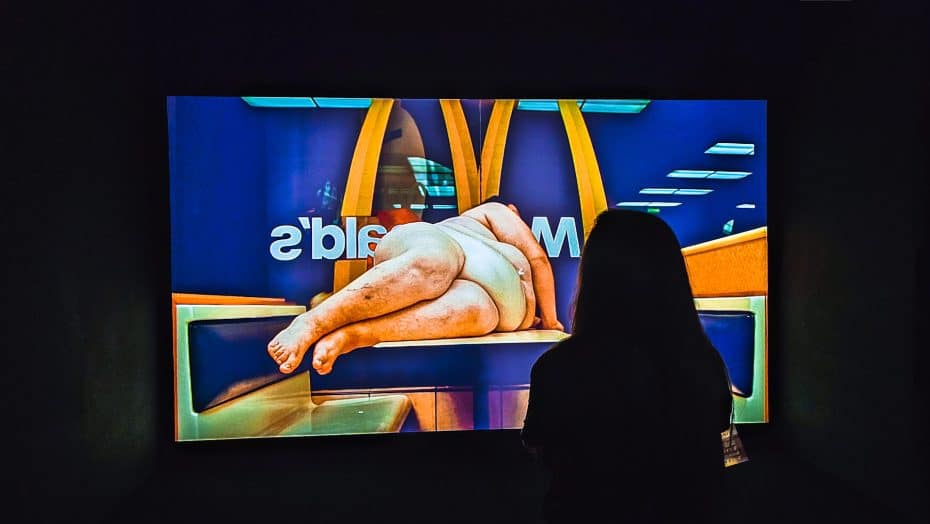
The Museum of Forbidden Art Barcelona is an intriguing and unconventional art space that showcases works deemed controversial or provocative.
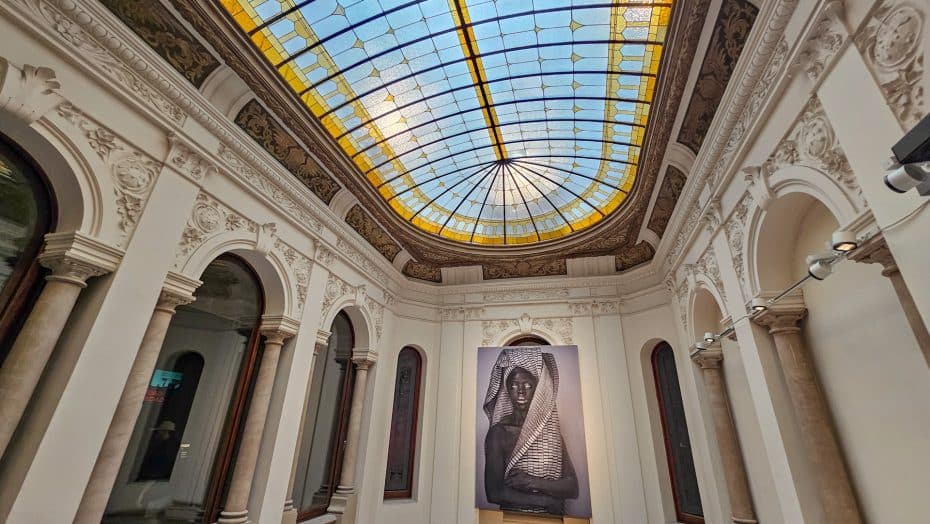
This quirky museum is housed at the gorgeous Casa Garriga Nogues (Diputació, 250, 08007, Barcelona). This early 20th-century building, situated in Barcelona’s Eixample district, was designed by renowned Catalan architect Enric Sagnier. The building is a prime example of Sagnier’s Modernista style. It is part of Barcelona’s Quadrat d’Or, or Golden Square, an area known for its concentration of modernist buildings.
Collection Highlights at the Museum of Forbidden Art
1. Con Flores a María by Charo Corrales
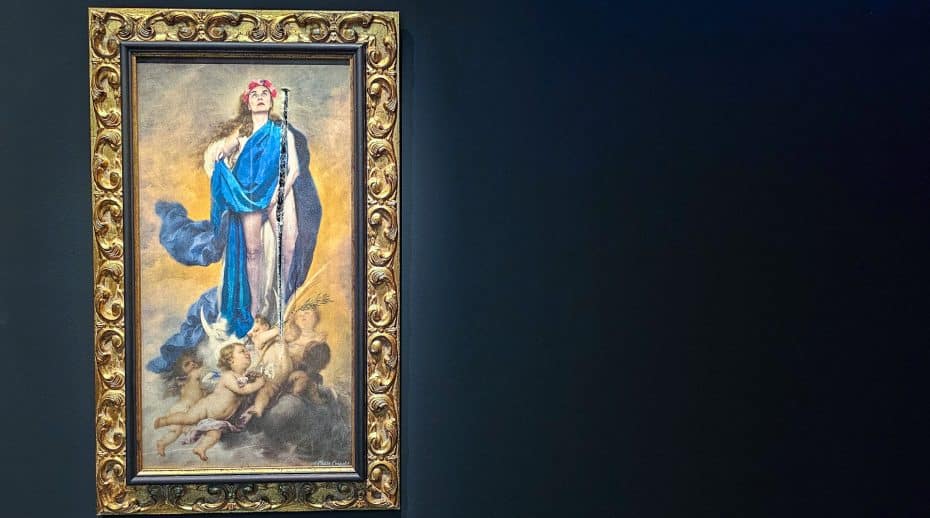
‘Con Flores a María,’ an artwork by Spanish artist Charo Corrales, offers an unconventional and provocative depiction of the Virgin Mary. Unlike traditional portrayals, Corrales presents the Virgin Mary in a manner that may be perceived as sexually suggestive. This daring representation has sparked intense debates, challenging societal norms and religious iconography. The controversy escalated when the artwork was vandalized, leaving a noticeable slash across the canvas.
2. Shark by David Cerny
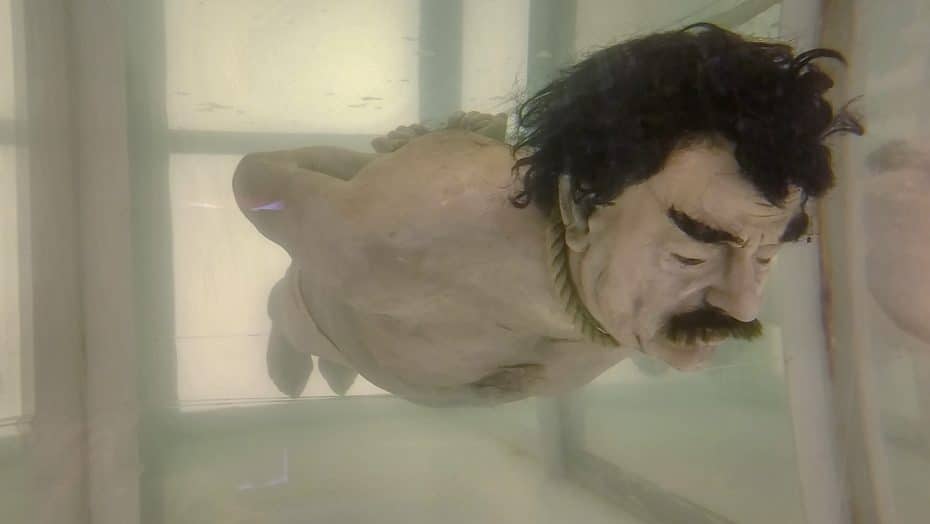
This sculpture by Czech artist David Cerny features Saddam Hussein, the former president of Iraq, depicted in his underwear with his hands bound behind his back, floating in a tank of water. The controversy arises from its representation of Hussein, a contentious figure in global politics. The depiction of him in his underwear and in a position of vulnerability could be seen as a critique of his regime but also as a breach of his personal dignity, particularly as he was still alive when the work was done. The artwork was even banned in Belgium due to its provocative nature.
3. Forever Franco by Eugenio Merino
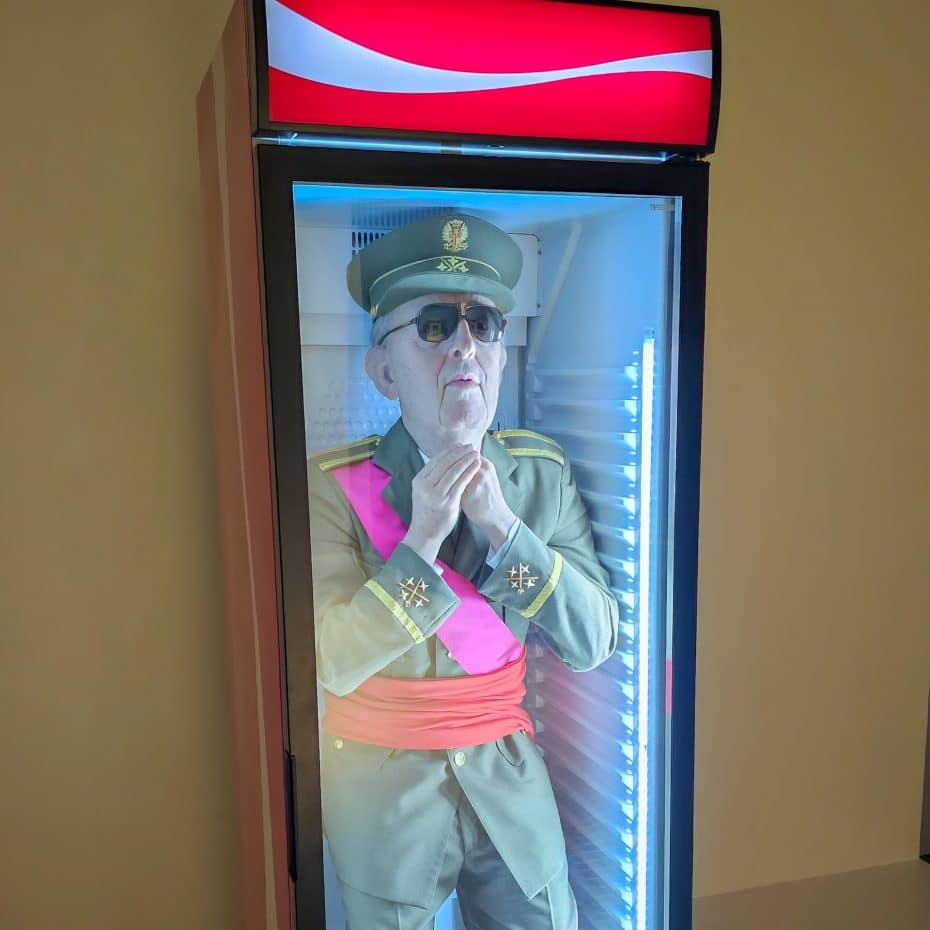
‘Forever Franco’ is a sculpture by Spanish artist Eugenio Merino. It features Francisco Franco, the former dictator of Spain, depicted standing in a Coca-Cola fridge. This piece is part of the collection of the Forbidden Art Museum in Barcelona. The artwork led to a lawsuit against the artist due to its provocative nature.
4. McJesus by Jani Leinonen
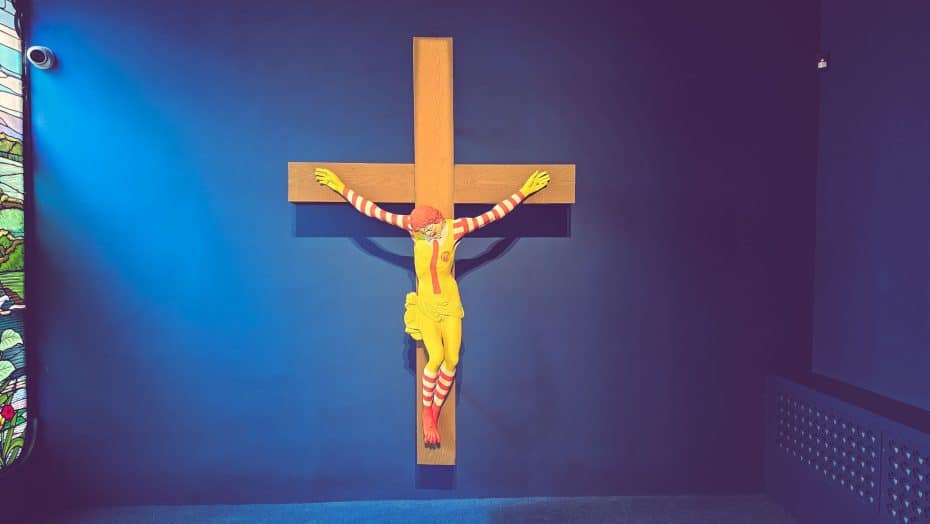
‘McJesus,’ a sculpture by Finnish artist Jani Leinonen, presents a provocative juxtaposition of commercial and religious imagery by depicting the iconic McDonald’s mascot, Ronald McDonald, in a crucifixion pose. This artwork sparked considerable debate, offering a critique of consumerism and idolatry in contemporary society. However, its controversial use of religious symbolism also incited protest.
5. La Revolución by Fabián Cháirez
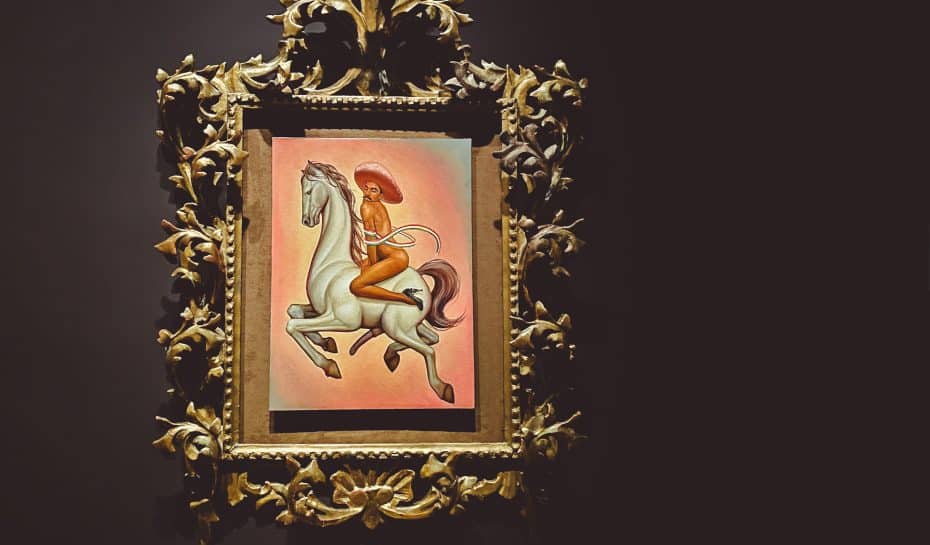
‘Zapata Queer,’ also known as ‘La Revolución,’ is a controversial artwork by Fabián Cháirez that offers an unconventional portrayal of Mexican Revolution hero Emiliano Zapata. The piece depicts Zapata in a feminized manner, complete with high heels and a pink sombrero, challenging traditional norms and exploring queer identity within Mexican history. Despite significant criticism and calls for its removal, the artwork remains on display as a testament to freedom of artistic expression and LGBTQ+ visibility.
6. Untitled by Keith Haring
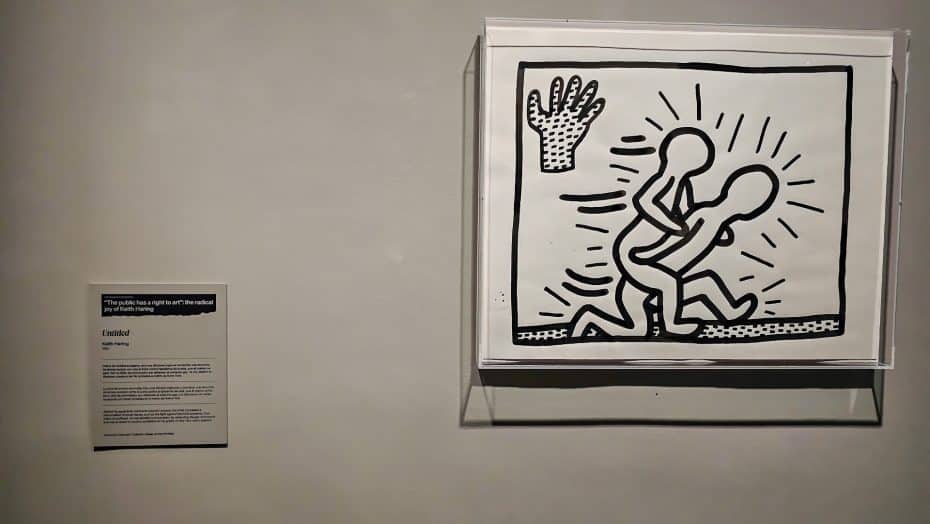
Keith Haring’s “Untitled” artwork from 1982 can be seen as a powerful commentary on sexual liberation and safety within the gay community. The depiction of gay sex in the artwork represents an unapologetic portrayal of LGBTQ+ love. Haring’s work, renowned for its exploration of identity, love, and social justice, served not only as a personal expression but also as advocacy for the issues he deeply cared about.
7. Pablo Picasso’s “Raphaël et la Fornarina. VII: Le Pape est là, assist”
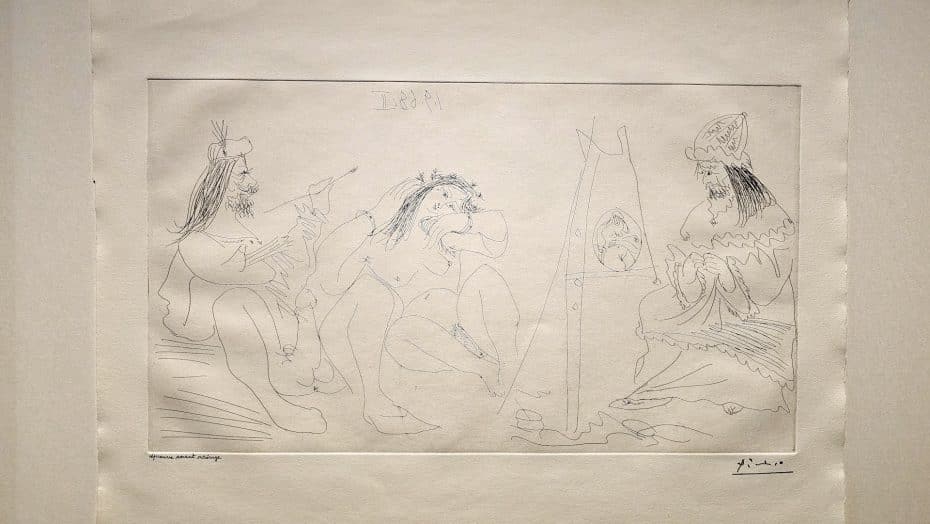
Pablo Picasso’s “Raphaël et la Fornarina. VII: Le Pape est là, assis” is known for its explicit and provocative themes. Created in 1968, it can be seen as a direct and unambiguous commentary on authority figures, in this case, the Pope, with explicit sexual undertones. This artwork showcases Picasso’s audacity in challenging societal norms and using his art as a vehicle for critique and commentary.
8. Not Dressed For Conquest by Ines Doujak
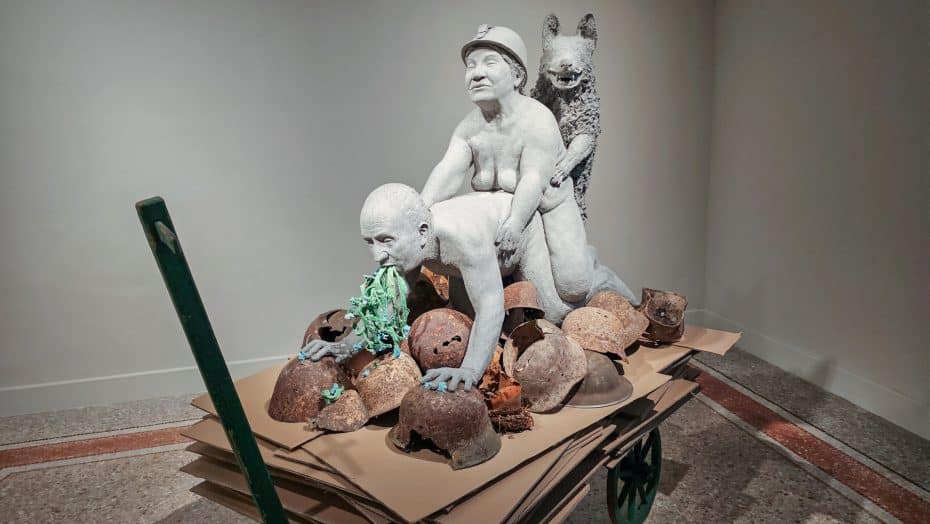
“Not Dressed For Conquest” is an explicitly provocative artwork by Ines Doujak, which depicts former Spanish King Juan Carlos I being sodomized. The decision to censor this artwork from the Museu d’Art Contemporani de Barcelona (MACBA) led to controversy and the dismissal of two curators in 2015. The artwork has since continued to spark significant discussions due to its explicit content.
9. Christ on a US Fighter Plane by León Ferrari
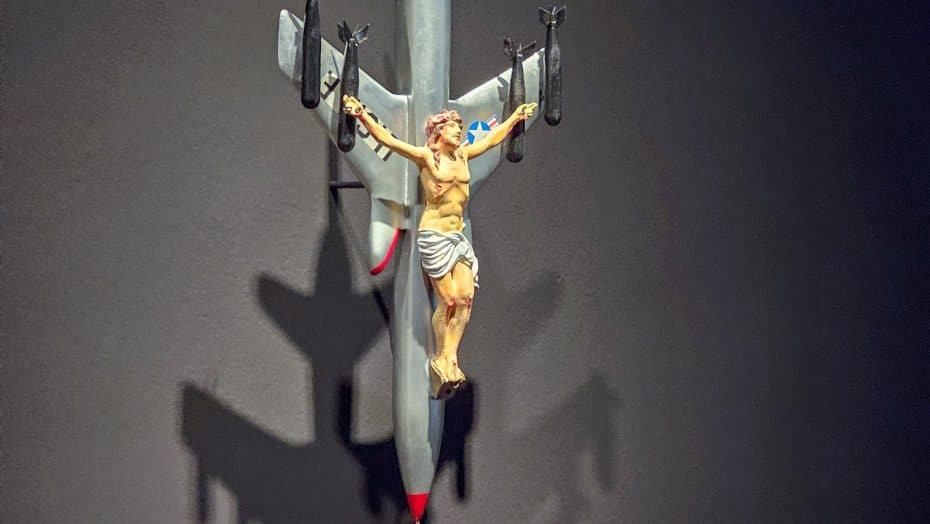
“Christ on a US Fighter Plane” is a piece of political art by Argentinian artist León Ferrari, which depicts Christ crucified on the wings of a U.S. fighter plane. Created in 1965, the artwork aims to critique the intertwining of religion and warfare. Despite its controversial nature leading to instances of censorship, the piece continues to spark significant discussions regarding the intersection of religion, politics, and art.
10. Mao Tse Tung by Andy Warhol
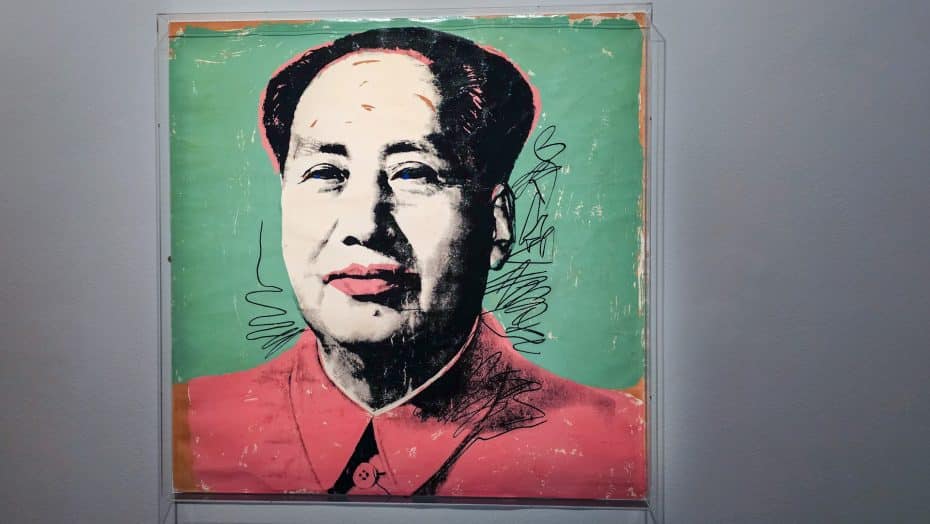
Andy Warhol’s artwork featuring Mao Tse Tung, also known as Mao Zedong, is among his most famous and controversial works. Between 1972 and 1973, Warhol created 199 silkscreen paintings of Mao in five scales. These portraits of Mao are considered among Warhol’s first explicitly political pieces. The artworks comment on the nature of state-controlled media by joining it together with the visual language of Western advertising, making a clear statement about propaganda and psychological influence.


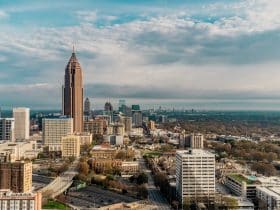
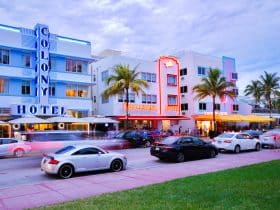
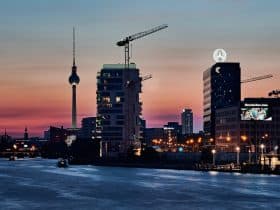
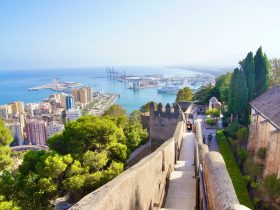
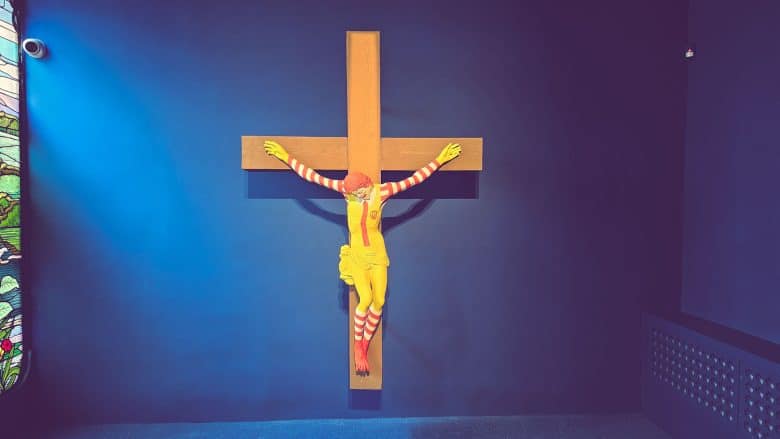
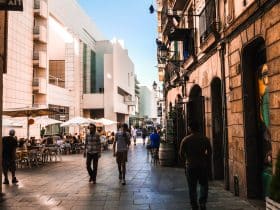
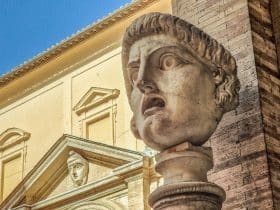

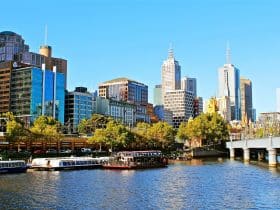
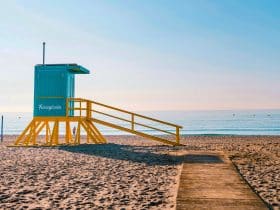












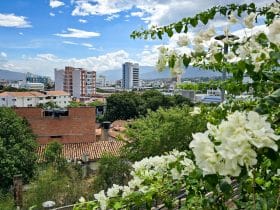
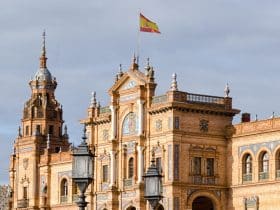
Leave a Reply
View Comments